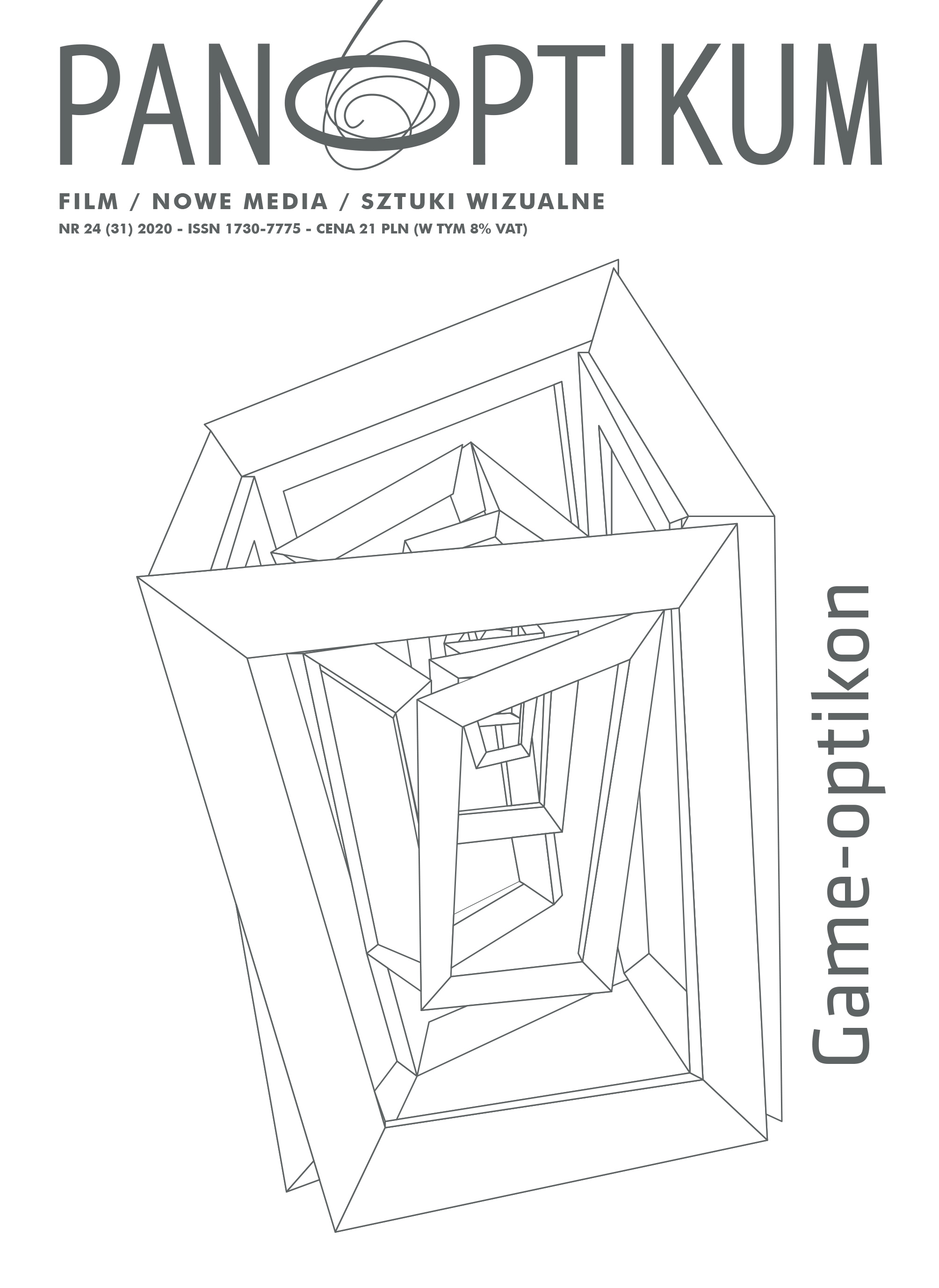Audiosfery lochów, poetyki krajobrazu. Ślady estetyk romantyzmu w grach cRPG
DOI:
https://doi.org/10.26881/pan.2020.24.03Słowa kluczowe:
aesthetics, cRPG, romanticism, landscape painting, music, dungeon synthAbstrakt
The aim of this text is to discern and analyze aesthetic tropes in selected fantasy cRPG games in the areas of visual arts and music. The analysis is conducted in the context of American romanticism, especially Hudson River School of painting, and musical works belonging to the dungeon synth genre. Through the enumeration and close reading of the elements pertaining both gameplay and digital landscapes, it is argued that the specific type of romantic imagery and its philosophical underpinnings may have influenced the recurring themes in cRPG games, including character development, avatar’s agency and player’s projected disposition towards the game world.
Downloads
Bibliografia
Agrawal, R.R. (1990). The Medieval Revival and Its Influence on the Romantic Movement. New Delhi: Abhinav Publications.
Avery, K.J. (1987). A Historiography of the Hudson River School. W: The American Paradise. The World of the Hudson River School, J.K. Howat (Ed.). New York: The Metro¬politan Museum od Art.
Bartram, R. (2004). Visuality, Dromology and Time Compression: Paul Virilio’s New Ocularcentrism, Time & Society, No. 13 (2–3).
Bielik-Robson, A. (2000). Inna nowoczesność. Pytania o współczesną formułę duchowości. Kraków: Universitas.
Cole, T. (1836). Essay on American Scenery, The American Monthly Magazine, Vol. I.
Fraser, E., Wilmott, C. (2016). From Underground to the Sky: Navigating Verticality Through Play. W: , Playful Mapping in the Digital Age, M. Rasch (Ed.). Amsterdam: Institute of Network Cultures.
Garda, M.B. (2016). Interaktywne fantasy. Gatunek w grach cyfrowych. Łódź: Wydawnic¬two Uniwersytetu Łódzkiego.
Gillespie, G., Crouse, D. (2012). There and Back again: Nostalgia, Art, and Ideolo¬gy in Old-School Dungeons and Dragons, Games and Culture, No. 7(6), https://doi. org/10.1177/1555412012465004 (dostęp: 10.06.2020).
Guardiano, N.L. (2017). Aesthetic Transcendentalism in Emerson, Peirce, and Nineteenth- Century American Landscape Painting. Lanham–London: Lexington Books.
Harvey, S.C. (2013). Transatlantic Transcendentalism: Coleridge, Emerson, and Nature. Edinburgh: Edinburgh University Press.
Heringman, N. (2004). Romantic Rocks, Aesthetic Geology. Ithaca–London: Cornell University Press.
Hutchison, A. (2008). Making the Water Move: Techno-Historic Limits in the Game Aesthetics of Myst and Doom, Game Studies, No. 8(1), http://gamestudies.org/0801/ar¬ticles/hutch (dostęp: 10.06.2020).
Karhulahti, V.-M. (2011). Mechanic/Aesthetic Videogame Genres: Adventure and Adventure. W: MindTrek ’11: Proceedings of the 15th International Academic MindTrek Conference: Envisioning Future Media Environments. New York: Association for Compu¬ting Machinery.
Klimczak, P. (2019). Bathory w objęciach Klausa Schulze, Noise Magazine, nr X [październik, wydanie specjalne].
Krishnaswami, R. (2020). Playing Songwriter: Creating Songs for the Fictional Worlds of Video Games, Journal of Sound and Music in Games, No. 1 (2).
Majkowski, T. (2019). Język gropowieści. Studia o różnojęzyczności gier cyfrowych. Kraków: Wydawnictwo Uniwersytetu Jagiellońskiego.
Majkowski, T. (2013). W cieniu białego drzewa. Powieść fantasy w XX wieku. Kraków: Wydawnictwo Uniwersytetu Jagiellońskiego.
Martin, P. (2011). The Pastoral and the Sublime in Elder Scrolls IV: Oblivion, Game Studies, No. 11 (3). http://gamestudies.org/1103/articles/martin (dostęp: 10.06.2020).
McAlpine, B.K. (2018). Bits and Pieces: A History of Chiptunes. Oxford: Oxford Universi¬ty Press.
McEvoy, E. (2007). Gothic and the Romantics. W: The Routledge Companion to Gothic, C. Spooner, E. McEvoy (Eds.). London–New York: Routledge.
Niedenthal, S. (2009). What We Talk About When We Talk About Game Aesthetics. W: Breaking New Ground: Innovation in Games, Play, Practice and Theory. Proceedings of DiGRA 2009, http://www.digra.org/wp-content/uploads/digital-library/09287.17350.pdf (dostęp: 10.06.2020).
Novak, B. (2007). Nature and Culture. American Landscape and Painting 1825–1875 (Third). Oxford–New York: Oxford University Press.
Rone, V. (2020). History and Reception in the Music of The Legend of Zelda Peritexts, Journal of Sound and Music in Games, No. 1 (2), https://doi.org/10.1525/jsmg.2020.1.2.44 (dostęp: 10.06.2020).
Sowiński, R. (2019). Pieśni z piwnicy, czyli wstęp do dungeon synthu, Popmoderna, http://popmoderna.pl/piesni-z-piwnicy-czyli-wstep-do-dungeon-synthu/ (dostęp: 10.06.2020).
Stang, S., Trammell, A. (2019). The Ludic Bestiary: Misogynistic Tropes of Female Monstrosity in Dungeons & Dragons, Games and Culture, Vol. 15, https://doi.org/10.1177/1555412019850059 (dostęp: 10.06.2020).
Vargas-Iglesias, J.J. (2020). Making Sense of Genre: The Logic of Video Game Genre Organization, Games and Culture, No. 15 (2), https://doi.org/10.1177/1555412017751803 (dostęp: 10.06.2020).
Vella, D. (2015). No Mastery Without Mystery: Dark Souls and the Ludic Sublime, Game Studies, No. 15 (1), http://gamestudies.org/1501/articles/vella (dostęp: 10.06.2020).
Ludografia:
Baldur’s Gate (1998, BioWare).
Castelvania. (1986, Konami).
Chrono Trigger (1995, Square).
Dark Souls (2011, FromSoftware).
Dragon Age: Inquisition (2011, BioWare).
Gothic (2001, Piranha Bytes).
Icewind Dale (2000, Black Isle Studios).
Might and Magic V: Darkside of Xeen (1993, New World Computing).
Pillars of Eternity (2015, Obsidian Entertainment).
Secret of Mana (1993, Square).
The Elder Scrolls III: Morrowind (2002, Bethesda Game Studios).
The Elder Scrolls IV: Oblivion (2006, Bethesda Game Studios).
The Elder Scrolls V: Skyrim (2011, Bethesda Game Studios).
The Faery Tale Adventure (1987, MicroIllusions).
The Legend of Zelda (1986, Nintendo EAD).
Ultima IV: Quest of the Avatar (1985, Origin Systems).
Wiedźmin 3: Dziki Gon (2015, CD Projekt Red).

 Uniwersyteckie Czasopisma Naukowe
Uniwersyteckie Czasopisma Naukowe









